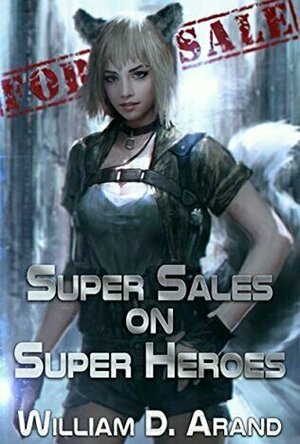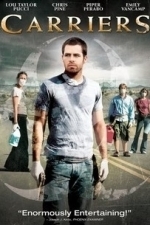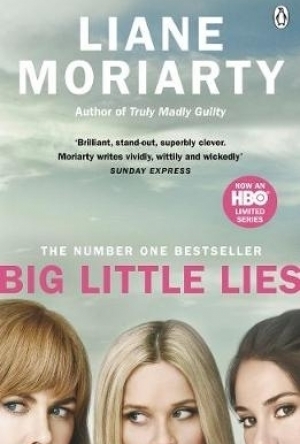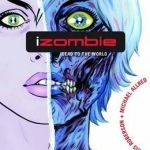Search
Search results
Jesters_folly (230 KP) rated Super Sales on Super Heros in Books
Sep 12, 2020
The Super villains have taken over the city Felix lives in and are, in their own way doing a good job of running it.
Felix has his own super power, the ability to modify/repair/upgrade anything he owns, the only problem is it takes points for him to do anything and, even though they reset every midnight he never has enough points to anything major. This changes when Felix accidentally buys an almost dead super hero. As slavery is now legal the super hero is now his and Felix is surprised at how many points she gives him. Now Felix sets out to improve his life, but, can he do it with out being noticed. Or making enemy's.
Super Sales on Super Hero's was my first taste of litrpg and soon became one of my favourite books. Felix starts off as quite an understandable underdog and, even as he rises to become an overpowered hero, he find himself in situations where he can't do anything.
Being a 'LitRpg' book there are tables of stats, Felix can change anything or anyone he owns and these changes are represented by the characters stat sheets but these fit well into the narrative so don't pull you out of the story.
There is violence in this book and, although a lot of it is fantasy/superhero style fighting there is also gun battles and fist fights. It also touches on subjects such as slavery and harems.
Super Sales on Super Hero's is the first book of a trilogy and after that the story does continue (kind of) in two more books
Felix has his own super power, the ability to modify/repair/upgrade anything he owns, the only problem is it takes points for him to do anything and, even though they reset every midnight he never has enough points to anything major. This changes when Felix accidentally buys an almost dead super hero. As slavery is now legal the super hero is now his and Felix is surprised at how many points she gives him. Now Felix sets out to improve his life, but, can he do it with out being noticed. Or making enemy's.
Super Sales on Super Hero's was my first taste of litrpg and soon became one of my favourite books. Felix starts off as quite an understandable underdog and, even as he rises to become an overpowered hero, he find himself in situations where he can't do anything.
Being a 'LitRpg' book there are tables of stats, Felix can change anything or anyone he owns and these changes are represented by the characters stat sheets but these fit well into the narrative so don't pull you out of the story.
There is violence in this book and, although a lot of it is fantasy/superhero style fighting there is also gun battles and fist fights. It also touches on subjects such as slavery and harems.
Super Sales on Super Hero's is the first book of a trilogy and after that the story does continue (kind of) in two more books

Dirty Game - Hot Truth or Dare
Lifestyle and Entertainment
App
********************************************************** BIGGEST COLLECTION of the Dirtiest TRUTH...
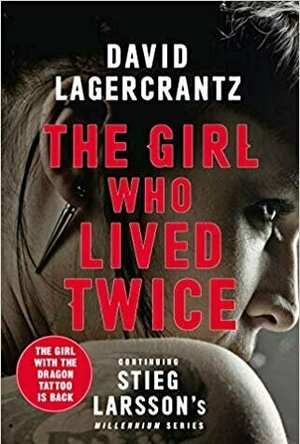
The Girl Who Lived Twice
Book
The sixth in the Millennium series featuring THE GIRL WITH THE DRAGON TATTOO - more than 100 million...
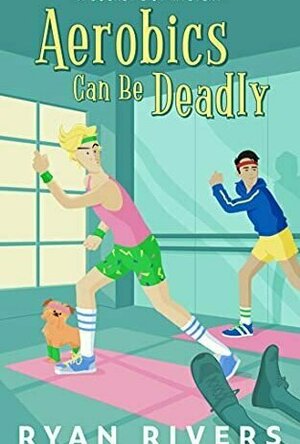
Aerobics Can Be Deadly
Book
When this odd couple signs up to be extras in a fitness video, it's lights, camera... murder. Sho...
Purple Phoenix Games (2266 KP) rated Pirate's Mark in Tabletop Games
Mar 29, 2021
I simply cannot get enough of pirate games! I know some gamers are tired of pirates and zombies and Mediterranean trading, and I most certainly understand that. However, I’m just a sucker for some themes, and pirates are one. I am also growing to love press-your-luck style games for that giant helping of luck. I mean, how different is it from rolling a die and basing turns on those results? In this case it is flipping over cards instead of flipping the number of cards rolled. Similar, but different. In any case, today I take a look at Pirate’s Mark from first-time designers, artist, and publisher. Let’s see if I have found a treasure or contracted scurvy from the ordeal.
Pirate’s Mark is a bluffing, bidding, press-your-luck card game about finding treasure in the sea and avoiding contracting the Pirate’s Mark: the mark of death. In it players are pirates searching the seas by boasting about how many treasures they expect they will find, flipping over cards, and dealing with any consequences of their pulls. The last pirate to remain unmarked at the end of the game will be the winner and richest of all pirates on the vast seas.
DISCLAIMER: We were provided a copy of this game for the purposes of this review. This is a retail copy of the game, so what you see in these photos is exactly what would be received in your box. I do not intend to cover every single rule included in the rulebook, but will describe the overall game flow and major rule set so that our readers may get a sense of how the game plays. For more in depth rules, you may purchase a copy online or from your FLGS. -T
To setup, include the correct number of cards as described in the rulebook for the number of players. Once the cards are shuffled they will be laid out in a 10 x 15 grid on the table, face-down. The Compass Rose card and die are placed near the card grid and the game is ready to begin!
On a turn a short bidding round commences with players announcing how many cards they believe they can pull from the grid without uncovering a Pirate’s Mark card. This bidding goes around the table with bids increasing with each player until one player calls the bluff and forces the last player to bid to take their turn. That player then pulls a number of cards face-up from the sea and resolves any cards that are immediate, stashes cards that are treasures, and holds cards that contain the phrase, “Play this card,” to be used at a later time.
If the turn is uneventful, by not revealing any Pirate’s Mark cards, then the game continues with bidding and pulling. However, once a pirate reveals a Pirate’s Mark card, they are marked and cannot participate in the bidding any longer (unless they find a way to unmark themselves, which IS possible). Marked players can get back in the game by calling another player’s bluff correctly. There is indeed risk here as a marked player that incorrectly calls a bluff is permanently dead and out of the game.
There are some more rules for the end of the game phase called, “Duel Mode,” but I will let you discover those on your own. Play continues in this fashion until one player is standing and unmarked. This player wins the game and the others need to pack up the 130 cards that were setup. Okay, I added that last part.
Components. This game is a ton of square cards and a fantastic d12 that is only used for the two-player variant. The cards are all glossy, but good quality, and feature photos (akin to screencaps from movies) instead of illustrations. I find the theme to be very present in not only the press-your-luck and bidding/bluffing mechanics, but also in the design of the cards and the photos used. It feels like a piratey game and plays like a piratey game. Like I said, the d12 is fabulous, and I actually happen to own a set of dice that I use for my RPG campaigns… sometimes. All in all the game has some good components and looks great on the table.
So I have some good AND bad news to deliver. First the bad. Some cards that are pulled are way too overpowered. One is called “Blackbeard’s Sword.” It allows the player to “peek under the number of cards left in your bid.” I used this card on a bid of 22 cards and was able to pull all safe cards because this allowed me to see 22 cards and avoid any Pirate’s Marks. Super OP if you ask me. The only other bad I have here is setup. There are 130 cards to be sorted, shuffled, and laid out in a nice-looking grid before the game can be played. For those of us with slight or full-blown OCD that is a nightmare. Luckily, I only stress if the cards are way out of whack instead of just slightly askew.
Now for all the good. I like this game quite a bit. To offset some of the OP of the aforementioned card, the game comes with some pretty great Lucky and Curse cards to be pulled. A couple Lucky cards are, “Drop Anchor,” which ends the player’s turn when revealed, thus negating any Mark pulls, and “Flying Dutchman,” which can be played on a marked player to instantly kill them. Now, I do not condone murder normally, but when playing a pirate game, it is to be expected. The Curses pulled are equally unlucky. “Winds of Fate” allows the person who called the bluff to choose the rest of the cards to be pulled for your turn. OUCH! Especially if they had used “Blackbeard’s Sword” and know where one or more Pirate’s Marks are hidden. Similarly unlucky is “Isla Muerta” which penalizes the player if they have 10 or more treasure cards and pull a Pirate’s Mark – they die instantly from the curse! These are just a few examples of some cards that can be encountered during play, and there are a whole lot more of them included.
I do so enjoy bluffing and luck-based games more and more, and Pirate’s Mark certainly gives it to me on those fronts. Being able to just whisk away 20 or more cards because you happen to have that coveted card you used is devilishly fun. Watching the other players seethe with envy as you pull treasure after treasure and avoid Marks is like winning $20 on a scratch-off. It won’t change your life, but it will give a shot of adrenaline and euphoria for a few minutes. I think Pirate’s Mark fills a void of straight bidding, bluffing, and luck that certainly matches the theme perfectly, and remains a good game as well.
Also, if you happen across one of the expansions, “Parrghty Mode,” it adds another five players to the game and bumps up the count of cards in play from 130 to a whopping 168! This is not for the small of table. I wish there was room inside the base game’s box to fit these extra cards, but alas, there is not.
So if you are like me and enjoy games on the lighter side that perfectly match game to theme, then you have to check out Pirate’s Mark. Purple Phoenix Games gives this one a haunting 8 / 12. I certainly recommend it and will now be finding a place in my main shelf unit for it. Hmm, which game do I make walk the plank…?
Pirate’s Mark is a bluffing, bidding, press-your-luck card game about finding treasure in the sea and avoiding contracting the Pirate’s Mark: the mark of death. In it players are pirates searching the seas by boasting about how many treasures they expect they will find, flipping over cards, and dealing with any consequences of their pulls. The last pirate to remain unmarked at the end of the game will be the winner and richest of all pirates on the vast seas.
DISCLAIMER: We were provided a copy of this game for the purposes of this review. This is a retail copy of the game, so what you see in these photos is exactly what would be received in your box. I do not intend to cover every single rule included in the rulebook, but will describe the overall game flow and major rule set so that our readers may get a sense of how the game plays. For more in depth rules, you may purchase a copy online or from your FLGS. -T
To setup, include the correct number of cards as described in the rulebook for the number of players. Once the cards are shuffled they will be laid out in a 10 x 15 grid on the table, face-down. The Compass Rose card and die are placed near the card grid and the game is ready to begin!
On a turn a short bidding round commences with players announcing how many cards they believe they can pull from the grid without uncovering a Pirate’s Mark card. This bidding goes around the table with bids increasing with each player until one player calls the bluff and forces the last player to bid to take their turn. That player then pulls a number of cards face-up from the sea and resolves any cards that are immediate, stashes cards that are treasures, and holds cards that contain the phrase, “Play this card,” to be used at a later time.
If the turn is uneventful, by not revealing any Pirate’s Mark cards, then the game continues with bidding and pulling. However, once a pirate reveals a Pirate’s Mark card, they are marked and cannot participate in the bidding any longer (unless they find a way to unmark themselves, which IS possible). Marked players can get back in the game by calling another player’s bluff correctly. There is indeed risk here as a marked player that incorrectly calls a bluff is permanently dead and out of the game.
There are some more rules for the end of the game phase called, “Duel Mode,” but I will let you discover those on your own. Play continues in this fashion until one player is standing and unmarked. This player wins the game and the others need to pack up the 130 cards that were setup. Okay, I added that last part.
Components. This game is a ton of square cards and a fantastic d12 that is only used for the two-player variant. The cards are all glossy, but good quality, and feature photos (akin to screencaps from movies) instead of illustrations. I find the theme to be very present in not only the press-your-luck and bidding/bluffing mechanics, but also in the design of the cards and the photos used. It feels like a piratey game and plays like a piratey game. Like I said, the d12 is fabulous, and I actually happen to own a set of dice that I use for my RPG campaigns… sometimes. All in all the game has some good components and looks great on the table.
So I have some good AND bad news to deliver. First the bad. Some cards that are pulled are way too overpowered. One is called “Blackbeard’s Sword.” It allows the player to “peek under the number of cards left in your bid.” I used this card on a bid of 22 cards and was able to pull all safe cards because this allowed me to see 22 cards and avoid any Pirate’s Marks. Super OP if you ask me. The only other bad I have here is setup. There are 130 cards to be sorted, shuffled, and laid out in a nice-looking grid before the game can be played. For those of us with slight or full-blown OCD that is a nightmare. Luckily, I only stress if the cards are way out of whack instead of just slightly askew.
Now for all the good. I like this game quite a bit. To offset some of the OP of the aforementioned card, the game comes with some pretty great Lucky and Curse cards to be pulled. A couple Lucky cards are, “Drop Anchor,” which ends the player’s turn when revealed, thus negating any Mark pulls, and “Flying Dutchman,” which can be played on a marked player to instantly kill them. Now, I do not condone murder normally, but when playing a pirate game, it is to be expected. The Curses pulled are equally unlucky. “Winds of Fate” allows the person who called the bluff to choose the rest of the cards to be pulled for your turn. OUCH! Especially if they had used “Blackbeard’s Sword” and know where one or more Pirate’s Marks are hidden. Similarly unlucky is “Isla Muerta” which penalizes the player if they have 10 or more treasure cards and pull a Pirate’s Mark – they die instantly from the curse! These are just a few examples of some cards that can be encountered during play, and there are a whole lot more of them included.
I do so enjoy bluffing and luck-based games more and more, and Pirate’s Mark certainly gives it to me on those fronts. Being able to just whisk away 20 or more cards because you happen to have that coveted card you used is devilishly fun. Watching the other players seethe with envy as you pull treasure after treasure and avoid Marks is like winning $20 on a scratch-off. It won’t change your life, but it will give a shot of adrenaline and euphoria for a few minutes. I think Pirate’s Mark fills a void of straight bidding, bluffing, and luck that certainly matches the theme perfectly, and remains a good game as well.
Also, if you happen across one of the expansions, “Parrghty Mode,” it adds another five players to the game and bumps up the count of cards in play from 130 to a whopping 168! This is not for the small of table. I wish there was room inside the base game’s box to fit these extra cards, but alas, there is not.
So if you are like me and enjoy games on the lighter side that perfectly match game to theme, then you have to check out Pirate’s Mark. Purple Phoenix Games gives this one a haunting 8 / 12. I certainly recommend it and will now be finding a place in my main shelf unit for it. Hmm, which game do I make walk the plank…?
Chris Sawin (602 KP) rated Carriers (2009) in Movies
Jun 20, 2019
Brian and Danny grew up as two brothers who were relatively close to one another. They cherish the memories they have of Turtle Beach, a beach their family vacationed to every summer. The abandoned motel in Turtle Beach may be their best bet of surviving the highly contagious disease that now plagues the entire country and possibly the world. Not much is known about the virus other than the victims coughing up blood and bleeding from the ears as their condition worsens. Brian actually came up with a few rules that will hopefully get him, his girlfriend Bobby, his brother Danny, and Danny's friend Kate through this disease ridden world to Turtle Beach clean. The rules include avoiding the infected at all costs, disinfecting anything they've touched in the past 24 hours, and that the infected are already dead as there is no cure. You may survive if you stick to the rules, but actually abiding by them is an entirely different story.
Right off the bat, people are probably going to compare Carriers to Zombieland because of the rules. Carriers was released a full month before Zombieland, but Paramount Vantage folded upon its initial release causing its wide release to be an extremely limited one at the last minute (I think it wound up playing at only two theaters in the country). Expectations rise unintentionally in situations such as this. "This is that horror film that was practically shelved earlier this year and is finally being released." The result is a horror film that is well worth watching, but may not be entirely what you're expecting.
Carriers is more about establishing an atmosphere than anything else. Everything is abandoned and rightfully so as most people were picked off handfuls at a time by this pandemic. The entire film is more like the first half hour of 28 Days Later where Jim wakes up in an abandoned hospital and realizes how empty the streets of London are. There aren't masses of the infected running around lusting for brains or wanting to tear humans apart in Carriers. The story follows these four friends as they journey across the country to this supposed sanctuary where they hope to tough it out until this disease runs its course. Carriers is more of a slow burn as things turn from bad to worse very slowly and snowball as the film goes on.
Chris Pine is really the drawing factor of the film. His role as Brian is kind of like a more intense version of his role as Kirk in Star Trek from earlier this year. Brian comes off as an inconsiderate prick the first half of the film and seems to only do things that benefit himself. The second half is where his character gets interesting though. The speech he gives Danny about their parents and telling Danny that he only told him what he wanted to hear is the turning point for Brian. Chris Pine shines as things begin to roll downhill for Brian as his emotions take center stage and his true demeanor is revealed.
Everything else in the film pretty much feels like routine manuevers when it comes to films revolving around viral outbreaks as some main characters contract the disease, they resort to drastic measures to survive, and begin to question their humanity along the way. The most disappointing part of the film is the ending as things just seem to kind of stop without much of a resolution. It seems like films like this either end this way or have a really depressing ending and that's its biggest flaw. Movie buffs who have seen films concerning pandemics already have a rough idea of how the film is going to end and it's about time to mix that up a bit. There's got to be a decent way to end the film that offers something a bit different that could wrap everything up until that point, but also leave enough room open for a sequel if need be.
Carriers may be a bit slow at first and doesn't really offer anything you probably haven't seen before in a film like this, but is still worth seeing for Chris Pine's performance. It's kind of a more serious take on Zombieland without actual zombies running or stumbling around with an atmosphere similar to the one established in Danny Boyle's 28 Days Later. If you're a fan of films involving a virus that has wiped out most of the human population, then this is still worth a watch.
Right off the bat, people are probably going to compare Carriers to Zombieland because of the rules. Carriers was released a full month before Zombieland, but Paramount Vantage folded upon its initial release causing its wide release to be an extremely limited one at the last minute (I think it wound up playing at only two theaters in the country). Expectations rise unintentionally in situations such as this. "This is that horror film that was practically shelved earlier this year and is finally being released." The result is a horror film that is well worth watching, but may not be entirely what you're expecting.
Carriers is more about establishing an atmosphere than anything else. Everything is abandoned and rightfully so as most people were picked off handfuls at a time by this pandemic. The entire film is more like the first half hour of 28 Days Later where Jim wakes up in an abandoned hospital and realizes how empty the streets of London are. There aren't masses of the infected running around lusting for brains or wanting to tear humans apart in Carriers. The story follows these four friends as they journey across the country to this supposed sanctuary where they hope to tough it out until this disease runs its course. Carriers is more of a slow burn as things turn from bad to worse very slowly and snowball as the film goes on.
Chris Pine is really the drawing factor of the film. His role as Brian is kind of like a more intense version of his role as Kirk in Star Trek from earlier this year. Brian comes off as an inconsiderate prick the first half of the film and seems to only do things that benefit himself. The second half is where his character gets interesting though. The speech he gives Danny about their parents and telling Danny that he only told him what he wanted to hear is the turning point for Brian. Chris Pine shines as things begin to roll downhill for Brian as his emotions take center stage and his true demeanor is revealed.
Everything else in the film pretty much feels like routine manuevers when it comes to films revolving around viral outbreaks as some main characters contract the disease, they resort to drastic measures to survive, and begin to question their humanity along the way. The most disappointing part of the film is the ending as things just seem to kind of stop without much of a resolution. It seems like films like this either end this way or have a really depressing ending and that's its biggest flaw. Movie buffs who have seen films concerning pandemics already have a rough idea of how the film is going to end and it's about time to mix that up a bit. There's got to be a decent way to end the film that offers something a bit different that could wrap everything up until that point, but also leave enough room open for a sequel if need be.
Carriers may be a bit slow at first and doesn't really offer anything you probably haven't seen before in a film like this, but is still worth seeing for Chris Pine's performance. It's kind of a more serious take on Zombieland without actual zombies running or stumbling around with an atmosphere similar to the one established in Danny Boyle's 28 Days Later. If you're a fan of films involving a virus that has wiped out most of the human population, then this is still worth a watch.
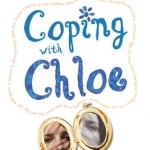
Coping with Chloe
Book
Anna and Chloe are twins. They share everything. Even Chloe's terrible accident hasn't split them...
Heather Cranmer (2721 KP) rated Big Little Lies in Books
Mar 22, 2020
After reading (and loving) What Alice Forgot by Liane Moriarty, I had wanted to read more by her. When I finally got the opportunity, I chose Big Little Lies. Liane Moriarty did not disappoint!
Many things are happening for the parents of the children that attend Pirriwee Public school. Madeline is happy go lucky, but she isn't afraid to speak her mind. Celeste is gorgeous and seems to have the perfect life, but it's what goes on behind closed doors that make her want to run away from it all. Jane, a single mom, is younger than most of the parents and has just moved to the area. With her, she brings a very big secret. As their lives intersect, things come to a head leaving one person dead. The thing is, was it murder, self defense, suicide, or just an unfortunate accident?
The plot for Big Little Lies is easy to navigate and understand. It was easy to imagine myself as a bystander in the book whilst all the action was going on around me. Most of the characters in this book lead a privileged life, so it was nice to get a sneak peek into their lives and see that they have problems as well. The pacing was done beautifully. The chapters weren't very long, so I kept telling myself one more chapter which we all know turns into many more chapters! The prose was fantastic and flowed perfectly. I kept wanting to know more and would try to guess who the character was that died. I enjoyed the dialogue that would start off most chapters where a character was talking to someone regarding the death of a character in present day. I did predict which character would end up dead though, but I suppose that was a lucky guess. There was one big plot twist I didn't see coming, and I loved that plot twist! The book ends with no cliff hangers, and all of my questions were answered.
I enjoyed every character in Big Little Lies. Each and every character was well developed and interesting to learn about. Although the story follows Madeline, Celeste, and Jane, other characters are fleshed out through their narratives. I loved how Madeline wasn't afraid to tell it like it was. She just could not hold anything back, yet people still wanted to be her friend. Her loyalty to her friends was admirable, and I would love a friend like her! Her husband, Ed, was very supportive to Madeline, and it was easy to see that he loved her. Her oldest daughter, Abigail, was an interesting one. I liked reading about her and seeing how she would turn out throughout everything. (The virginity thing sure was interesting, and I would have done exactly as Madeline!) Madeline's youngest daughter Chloe was cute. She reminded me so much of a younger Madeline. Nathan, Madeline's ex-husband, and his wife Bonnie were other characters that helped flesh out Madeline. I did like Bonnie's carefree personality though. I also loved reading about Celeste, and I felt bad for her many times with what she had to endure. Sure, to others, she had it all - looks, a huge house, a very rich and good looking husband who seemed to adore her, beautiful twin boys - but her pain was obvious throughout, and I could understand her hesitation to do the right thing. Getting to read about her thought process was interesting. Perry, Celeste's husband, came across as very charismatic. It was easy to see why everyone loved him so much. I wanted good things to happen for Jane and her little boy, Ziggy. Jane's love for Ziggy oozed from the pages. The love she had for Ziggy was so sweet. Ziggy seemed like such a cute little boy, and I just wanted to hug him and never let go especially after what happens very early on in the book.
Trigger warnings for Big Little Lies include death, drinking, drunkenness, profanity, domestic violence, violence, and sexual situations (although not graphic).
All in all, Big Little Lies is a delicious morsel of a book. It delves right into the lives of its characters who come to feel like close friends and family by the end of the book. I would definitely recommend Big Little Lies by Liane Moriarty to everyone aged 16+ who are in dire need of a fantastic read with a great cast of characters and a plot that sucks you right in!
Many things are happening for the parents of the children that attend Pirriwee Public school. Madeline is happy go lucky, but she isn't afraid to speak her mind. Celeste is gorgeous and seems to have the perfect life, but it's what goes on behind closed doors that make her want to run away from it all. Jane, a single mom, is younger than most of the parents and has just moved to the area. With her, she brings a very big secret. As their lives intersect, things come to a head leaving one person dead. The thing is, was it murder, self defense, suicide, or just an unfortunate accident?
The plot for Big Little Lies is easy to navigate and understand. It was easy to imagine myself as a bystander in the book whilst all the action was going on around me. Most of the characters in this book lead a privileged life, so it was nice to get a sneak peek into their lives and see that they have problems as well. The pacing was done beautifully. The chapters weren't very long, so I kept telling myself one more chapter which we all know turns into many more chapters! The prose was fantastic and flowed perfectly. I kept wanting to know more and would try to guess who the character was that died. I enjoyed the dialogue that would start off most chapters where a character was talking to someone regarding the death of a character in present day. I did predict which character would end up dead though, but I suppose that was a lucky guess. There was one big plot twist I didn't see coming, and I loved that plot twist! The book ends with no cliff hangers, and all of my questions were answered.
I enjoyed every character in Big Little Lies. Each and every character was well developed and interesting to learn about. Although the story follows Madeline, Celeste, and Jane, other characters are fleshed out through their narratives. I loved how Madeline wasn't afraid to tell it like it was. She just could not hold anything back, yet people still wanted to be her friend. Her loyalty to her friends was admirable, and I would love a friend like her! Her husband, Ed, was very supportive to Madeline, and it was easy to see that he loved her. Her oldest daughter, Abigail, was an interesting one. I liked reading about her and seeing how she would turn out throughout everything. (The virginity thing sure was interesting, and I would have done exactly as Madeline!) Madeline's youngest daughter Chloe was cute. She reminded me so much of a younger Madeline. Nathan, Madeline's ex-husband, and his wife Bonnie were other characters that helped flesh out Madeline. I did like Bonnie's carefree personality though. I also loved reading about Celeste, and I felt bad for her many times with what she had to endure. Sure, to others, she had it all - looks, a huge house, a very rich and good looking husband who seemed to adore her, beautiful twin boys - but her pain was obvious throughout, and I could understand her hesitation to do the right thing. Getting to read about her thought process was interesting. Perry, Celeste's husband, came across as very charismatic. It was easy to see why everyone loved him so much. I wanted good things to happen for Jane and her little boy, Ziggy. Jane's love for Ziggy oozed from the pages. The love she had for Ziggy was so sweet. Ziggy seemed like such a cute little boy, and I just wanted to hug him and never let go especially after what happens very early on in the book.
Trigger warnings for Big Little Lies include death, drinking, drunkenness, profanity, domestic violence, violence, and sexual situations (although not graphic).
All in all, Big Little Lies is a delicious morsel of a book. It delves right into the lives of its characters who come to feel like close friends and family by the end of the book. I would definitely recommend Big Little Lies by Liane Moriarty to everyone aged 16+ who are in dire need of a fantastic read with a great cast of characters and a plot that sucks you right in!
Gareth von Kallenbach (980 KP) rated Scary Stories to Tell in the Dark (2019) in Movies
Aug 9, 2019
I was introduced to Scary Stories to Tell in the Dark (the amazing book series written by Alvin Schwartz back in 1981) in my Junior High history class. An odd place for sure to listen to this amazing collection of stories, and yet it displayed how these stories are impactful even if you aren’t reading them around a campfire in the middle of the woods. Schwartz had written two additional sequels to his stories in 1984 and 1991 and the incredibly creepy illustrations (by Stephen Gammell) helped to complete a collection of books that are at home in anyone’s collection both young and old.
The 80’s was a decade obsessed with the occult and works of fiction that parents thought were written to corrupt the minds of the youth of the age. Before video games were blamed for all the evil in the world there was Heavy Metal music, the fantastical role-playing games such as Dungeons and Dragons and books such as these that parents rallied around and attempted to ban from schools and after school functions. Looking back now at the hysteria that this caused is almost laughable, but for those of us growing up in that time it was a very real threat to the imaginations of youth around the globe. Outside of this brief history lesson however, I wondered how the books would translate into a movie.
Our story begins on Halloween night, the year is 1968 and the Vietnam War and the upcoming presidential elections are on everyone’s mind. Stella (Zoe Colletti) and her nerd friends Chuck (Austin Zajur) and Auggie (Gabriel Rush) decide that this will be the year that they get revenge on the local bully Tommy (Austin Abrams) for all his years of stealing candy from them on Halloween. After things go predictably wrong, the young group of kids are pursued to a drive-in theater where they seek refuge in a car that is owned by another out-of-town youngster named Ramon (Michael Garza). As thanks for “saving” them from a certain beating, Stella and the group decide to take Ramon to a real-life haunted house. A place where a young Sarah Bellows would tell stories to frighten children only for them to end up dead days later. While exploring the house the young group discover the hidden room of young Sarah Bellows and come across her book of “Scary Stories”. Unable to contain her own curiosity, Stella takes the book home with her and watches as the words on the pages turn into living nightmares of their own darkest fears.
Produced by Guillermo del Toro, Patrick Melton and Marcus Dunstan, Scary Stories takes a handful of fan favorites and weaves them into a “scary” story of their very own. Instead of simply being a collection of haunting tales, each one serves a purpose, whether it’s the “Red Dot” or “Harold”, each one is used to drive the story even further along. While at first, I was hoping that it would be a collection of short stories featuring these timeless classics, the way in which each individual story progresses the plot leads to a far more interesting experience overall.
Those looking for a movie filled with frightening tales that will have you reaching for the closest shoulder (whether you know who it belongs to or not) will be in for a bit of disappointment. That’s not to take away from the incredible amount of vision needed to bring these classic stories to life, but it takes on a far more contemporary feel, then the dark stories and supernatural visions of the books that came before it. The film comes away feeling more like Goosebumps and less like Freakshow which makes sense given its PG-13 rating and its obvious pre-teen to teen demographic. The movie is still fun however, particularly for those who fondly remember the stories from their youth and is one that will proudly sit beside the likes of Hocus Pocus when it comes to network television down the road as part of its likely Halloween line-up.
4 out of 5 stars
http://sknr.net/2019/08/08/scary-stories-to-tell-in-the-dark/
The 80’s was a decade obsessed with the occult and works of fiction that parents thought were written to corrupt the minds of the youth of the age. Before video games were blamed for all the evil in the world there was Heavy Metal music, the fantastical role-playing games such as Dungeons and Dragons and books such as these that parents rallied around and attempted to ban from schools and after school functions. Looking back now at the hysteria that this caused is almost laughable, but for those of us growing up in that time it was a very real threat to the imaginations of youth around the globe. Outside of this brief history lesson however, I wondered how the books would translate into a movie.
Our story begins on Halloween night, the year is 1968 and the Vietnam War and the upcoming presidential elections are on everyone’s mind. Stella (Zoe Colletti) and her nerd friends Chuck (Austin Zajur) and Auggie (Gabriel Rush) decide that this will be the year that they get revenge on the local bully Tommy (Austin Abrams) for all his years of stealing candy from them on Halloween. After things go predictably wrong, the young group of kids are pursued to a drive-in theater where they seek refuge in a car that is owned by another out-of-town youngster named Ramon (Michael Garza). As thanks for “saving” them from a certain beating, Stella and the group decide to take Ramon to a real-life haunted house. A place where a young Sarah Bellows would tell stories to frighten children only for them to end up dead days later. While exploring the house the young group discover the hidden room of young Sarah Bellows and come across her book of “Scary Stories”. Unable to contain her own curiosity, Stella takes the book home with her and watches as the words on the pages turn into living nightmares of their own darkest fears.
Produced by Guillermo del Toro, Patrick Melton and Marcus Dunstan, Scary Stories takes a handful of fan favorites and weaves them into a “scary” story of their very own. Instead of simply being a collection of haunting tales, each one serves a purpose, whether it’s the “Red Dot” or “Harold”, each one is used to drive the story even further along. While at first, I was hoping that it would be a collection of short stories featuring these timeless classics, the way in which each individual story progresses the plot leads to a far more interesting experience overall.
Those looking for a movie filled with frightening tales that will have you reaching for the closest shoulder (whether you know who it belongs to or not) will be in for a bit of disappointment. That’s not to take away from the incredible amount of vision needed to bring these classic stories to life, but it takes on a far more contemporary feel, then the dark stories and supernatural visions of the books that came before it. The film comes away feeling more like Goosebumps and less like Freakshow which makes sense given its PG-13 rating and its obvious pre-teen to teen demographic. The movie is still fun however, particularly for those who fondly remember the stories from their youth and is one that will proudly sit beside the likes of Hocus Pocus when it comes to network television down the road as part of its likely Halloween line-up.
4 out of 5 stars
http://sknr.net/2019/08/08/scary-stories-to-tell-in-the-dark/
Louise (64 KP) rated Izombie: Volume 1: Dead to the World in Books
Jul 2, 2018
I first heard about this book from Elena reads books and was instantly intrigued!This book sounded fun, I haven’t read much about zombies and also just wanted to read more comics/graphic novels. It was totally fascinating from the start and definitely different.
Gwen appears to be you average everyday person at the start, other than working as a gravedigger she is normal, except she’s not! She is a zombie! but not your stereotypical zombie – she doesn’t walk around groaning, her face and body are not decaying. As long as she eats one brain per month she will not turn full zombie. However eating brains comes at a cost, first of all the brain has to be pretty fresh (hence being a gravedigger), she obviously can’t get caught, they taste bad….oh and she gets stuck with the deceased’s memories for a period of time. The last brain she ate was from a young family man who was killed by a serial killer. Gwen takes it upon herself to investigate why the man was murdered. Also there are a group of female vampires who don’t kill their victims they just feed little and often from men that attend paint balling in the woods. However there is always one that can’t play by the rules and is starting to attract attention from these ancient monster hunters.
There were so many different types of character/monsters in this book, we had zombies (obvs)Ghosts, Vampires and even a WereTerrier which I thought was kind of cute. This is a more of a fluffy zombie book and totally different from the walking dead. I liked all the individual characters but there wasn’t a lot of development and I think this was because there was too much trying to happen in one volume. We had the story of Gwen, it would then jump to the Vampires and then to the hunters, which made the plot line a bit disjointed. Some of the characters….Mainly Dixie was portrayed as being self-centred, all she thinks about is herself and Gwen is unable to rely on her even though she is her best friend. All the females in the book all seemed to have perfect bodies… I wish they just made some females different shapes and sizes. I really liked the art style and colours that were used to set the tone of the book. This was a great introduction to the story and I will be continuing on with the second volume.
Also there is a series on Netflix adaptation that is loosely based on the comic, I might start watching it as my partner has watched it and said it’s alright. Have you watched izombie? whats your thoughts on it?
Overall I rated this 3.75 out of 5 stars
Gwen appears to be you average everyday person at the start, other than working as a gravedigger she is normal, except she’s not! She is a zombie! but not your stereotypical zombie – she doesn’t walk around groaning, her face and body are not decaying. As long as she eats one brain per month she will not turn full zombie. However eating brains comes at a cost, first of all the brain has to be pretty fresh (hence being a gravedigger), she obviously can’t get caught, they taste bad….oh and she gets stuck with the deceased’s memories for a period of time. The last brain she ate was from a young family man who was killed by a serial killer. Gwen takes it upon herself to investigate why the man was murdered. Also there are a group of female vampires who don’t kill their victims they just feed little and often from men that attend paint balling in the woods. However there is always one that can’t play by the rules and is starting to attract attention from these ancient monster hunters.
There were so many different types of character/monsters in this book, we had zombies (obvs)Ghosts, Vampires and even a WereTerrier which I thought was kind of cute. This is a more of a fluffy zombie book and totally different from the walking dead. I liked all the individual characters but there wasn’t a lot of development and I think this was because there was too much trying to happen in one volume. We had the story of Gwen, it would then jump to the Vampires and then to the hunters, which made the plot line a bit disjointed. Some of the characters….Mainly Dixie was portrayed as being self-centred, all she thinks about is herself and Gwen is unable to rely on her even though she is her best friend. All the females in the book all seemed to have perfect bodies… I wish they just made some females different shapes and sizes. I really liked the art style and colours that were used to set the tone of the book. This was a great introduction to the story and I will be continuing on with the second volume.
Also there is a series on Netflix adaptation that is loosely based on the comic, I might start watching it as my partner has watched it and said it’s alright. Have you watched izombie? whats your thoughts on it?
Overall I rated this 3.75 out of 5 stars
